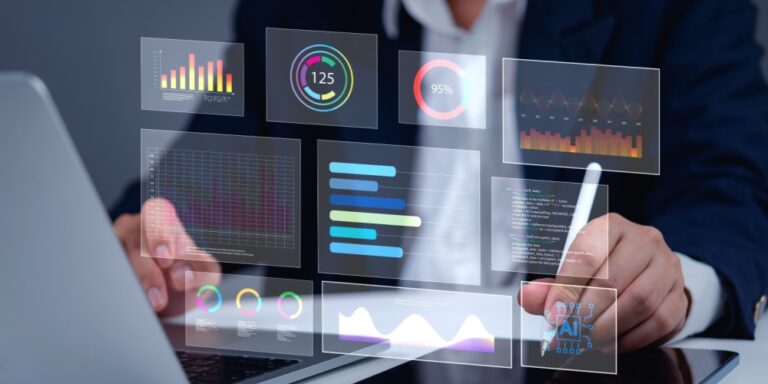Revenue is the income generated by your company’s sales activities — but at what point in the procure-to-pay cycle can you declare something has officially become revenue?
- Is it when the product is delivered?
- Is it when you send the invoice?
- Is it when the funds finally clear in your account and you can begin using them?
Knowing how much revenue you’ve received and how to record it properly are critical elements in successfully managing your company’s finances.
In this article, we’ll explore the formal, accepted, and industry-independent method of recognizing when your business captures revenue.
What is the revenue recognition principle in accounting, and why does it matter?
The revenue recognition principle dictates that a business may only formally recognize revenue on its income statement in the same period as when the value is earned. So, revenue is recognized when the actions that generate the income — such as a product being delivered or a service being performed — are completed rather than when the bill is settled or the payment realized.
As the term would suggest, the revenue recognition principle is a guideline used in generally accepted accounting principles (GAAP), which outlines the specific conditions that need to be met for revenue to be recorded in your financial reports.
In the U.S., only publicly traded businesses are legally obligated to comply with GAAP standards. Still, if you ever hope to raise funds from private investors or secure a bank loan, then you’ll likely want to follow GAAP in your reporting efforts, even if not mandated.
With a uniform standard in place, investors, loan agents, and other evaluators can be more confident in the documented totals and more easily compare the financial performance of companies not only among direct competitors but across industries as well.
Cash accounting vs. accrual accounting
- Accrual accounting: The accounting strategy used within GAAP that records both revenue and expenses when they are earned or billed.
- Cash accounting: A non-GAAP recognition strategy that instead records revenue and expenses when the funds arrive in or leave your bank account, respectively.
The GAAP-based revenue recognition principle became official with Accounting Standards Codification (ASC) 606
While revenue recognition standards have been in place for some time, before 2014, the details and requirements of the exact guidelines varied considerably across industries. In May of 2014, however, the Financial Accounting Standards Board (FASB) — the organization that created and maintains GAAP standards — and the International Accounting Standards Board (IASB) jointly issued the Accounting Standards Codification (ASC) 606 guidelines.
This new guidance, in turn, established a more neutral, industry-agnostic process for recognizing revenue no matter the type of business being evaluated.
The 5 steps of revenue recognition

Step 1: Identify the contract
Before you can recognize revenue generated from a product or service delivery, you need to have some form of contract in place. Admittedly, you don’t necessarily need a signed physical document invoice or an electronic file to fulfill this requirement. However, these documents can make things easier down the line. A verbal agreement can serve the same purpose as a retail receipt or established terms and conditions for a service or product.
Ultimately, you only need a commercial agreement with the buyer that identifies the payment terms, delivery requirements, rights, and performance obligations related to the exchange.
Step 2: Identify performance obligations
In a contract, the performance obligation identifies the specific goods or services that must be delivered to fulfill the contract. Typically, each obligation represents its own individual line item on an invoice or receipt. However, not every line item will operate as a unique obligation.
For example, if your business sells a 3-D printer to a given customer and bundles in optional maintenance services, the maintenance services — which you would never sell independent of a corresponding hardware sale — would not be a separate performance obligation.
Conversely, if you offer design services alongside your printers and market this support even for owners of third-party printers from other manufacturers, you would record the printer and associated design services as two separate obligations.
Step 3: Determine the transaction price
The transaction price reflects more than just the raw cost of the delivered goods or services. It also accounts for and defines any potential fees, return policies, financing options, or discounts that might be applied to the transaction.
Typically, you’ll want to include an estimated or projected value for the transaction price in the initial contract. The actual, realized totals will often depend on the specific product or service delivery conditions.
Note: Invoiced’s automated accounting software allows you to create templated invoices that include detailed line items, convenience fees, financing options, discounts, and more. These invoices can be customized across clients, per client, and even per invoice.
Step 4: Allocate the transaction price
With the above contract details established, you must apply the appropriate transaction price to each performance obligation for a given sale. In turn, the total of these allocations will equal the expected revenue for the total transaction.
Step 5: Recognize revenue
Since ASC 606 aligns with GAAP, you will only recognize individual transaction prices as revenue when the corresponding obligations of a given exchange are fulfilled—typically meaning that the product was delivered or the service was performed. Whether a specific invoice has been paid does not factor into revenue recognition.
Even if a customer has pre-paid before delivery, this income would be considered deferred revenue and would only be recognized once the ordered goods arrive at your customer’s location.
Additional GAAP & IFRS Criteria
To comply with GAAP reporting guidelines — particularly the matching principle — not only must the revenue be reported in the same accounting period as the product or service delivery, but any associated costs must also be documented in this timeframe.
Further, for a revenue to be legitimately recognized, there must also be a reasonable expectation that the outstanding debt associated with the sale will be paid off on time.
For example, if one of your customers enters bankruptcy and is expected to be dissolved, you wouldn’t recognize any outstanding invoices for this business as revenue.
As previously stated, GAAP applies only to U.S. businesses; however, the International Financial Reporting Standards (IFRS) provide a corresponding guideline for formalized accounting practices that are broadly accepted by the international community. IFRS follows the same five-step process as GAAP for recognizing revenue and applies five additional requirements.
In particular, the exchange must:
- Transfer risk and reward from the seller to the buyer
- Include the ceding of control for the associated goods or services from the seller
- Offer reasonable assurance the corresponding invoice will be paid
- Support easy identification of the actual amount of recognized revenue
- Make it straightforward to match the established revenue with the associated costs
Types of revenue recognition
Digital goods
When selling some type of digital asset — such as an ebook, mp3, or digital movie — you would recognize the corresponding revenue as soon as the purchased file is downloaded. In the context of FASB guidelines, you would only treat these purchases differently from a subscription model (see below) if the buyer can take possession of the digital good without additional fees beyond the initial cost of the product and if they can access the purchased item through third-party software or hardware.
E-commerce with future fulfillment(s)
Given the risks associated with an online business, most e-commerce sites require payment upfront, long before anything has been delivered. But despite having the relevant cash already in your account, ASC 606 outlines that this revenue should only be recognized once the ordered product has been shipped.
Installments
Conversely, for those companies that offer a buy now, pay later structure — including some e-commerce businesses — you’d only recognize the associated revenue upon service or product delivery.
Metered billing
For consumption-based pricing schemes, you’ll want to pay attention to the usage thresholds for each billable unit, recognizing revenue incrementally throughout the coverage period as each unit is consumed. In other words, via metered billing.
SaaS and digital subscriptions
In the context of a digital subscription model — the approach commonly used by software as a service (SaaS) businesses — your customers will receive value throughout the entire service period.
You’ll want to recognize your revenue linearly across the period covered by the contract. Further, when determining transaction prices, you’ll need to pay close attention to the potential fluctuations within the individual subscription, such as those from an upgrade, downgrade, cancellation, or proration.
Subscriptions with fulfillment obligations
Suppose the subscription focuses on individualized deliveries rather than constant service rather than linearly recognizing your revenue. In that case, you should instead proportionally recognize the subscription revenue depending on when individual performance obligations — or deliveries — are fulfilled.
How automation can help improve the accuracy and efficiency of your revenue recognition processes
Keeping up with the accrual accounting and GAAP guidelines doesn’t need to be overly complicated. With the right software, particularly a robust accounting automation platform, you can dramatically simplify and streamline these financial tracking and reporting requirements.
In particular, an effective automation solution will provide you with:
- Accelerated processes: When you leverage automated workflows to create, track, and collect invoices, you can eliminate unneeded wait times and process delays.
- Accurate figures: Make manual bookkeeping and transcription a thing of the past, reducing the likelihood of human error skewing your financial reports.
- Centralized oversight: Monitor all of your relevant accounts receivable (A/R) processes from a centralized dashboard, allowing you to identify where each sale is within the revenue recognition cycle.
- Comprehensive reporting: Rather than gathering up and running the calculations for your financial reports and documentation, let the software locate and crunch the numbers for you.
- Satisfied accounting staff: With the more mundane accounting and revenue-gathering tasks offloaded to the technology, your workers can focus on more engaging, strategic initiatives instead.
Understand your revenue with Invoiced
With Invoiced’s Accounts Receivable Automation software, you can:
- Build customized quotes on the fly that effectively match pricing with obligations.
- Offer flexible payment plans or support subscription-based billing — all from a single platform.
- Manage these various revenue-collection efforts with less work and greater accuracy.
- And so much more…
Even after recognizing your revenue, our platform can help you convert these anticipated payments into cash more quickly. Our Smart Chasing technology will standardize and schedule your dunning efforts with limited human intervention, keeping invoice deadlines at the forefront of your customer’s minds. And the integrated payment portal can make it quick and convenient for buyers and subscribers to settle up.
To learn more about what Invoiced’s Accounts Receivable Automation Software and Accounts Payable Automation Software can do for you, schedule a demo today!




